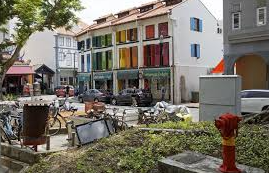Over 6,000 buildings in Maceió have been condemned as underground salt mining triggers dangerous subsidence.
In early 2018, cracks began appearing in buildings and roads in the Brazilian city of Maceió, particularly in the Pinheiro neighborhood. A combination of heavy rainfall and a small earthquake seemed to trigger the damage, but recent research reveals the cause goes back much further. Between 2004 and 2020, satellite data showed land subsidence in the area, with the ground sinking by up to 27cm annually by 2017.
The primary cause of this ground movement is linked to underground salt mining, which had been occurring up to a kilometer deep. The extraction process created cavities that eventually collapsed, causing the surface above to sink. Although mining operations ceased in 2019, geological models suggest that subsidence will continue for some time, with certain neighborhoods still at significant risk. In total, over 6,000 buildings have been condemned, and thousands of residents have been displaced.








